I don’t know if you’ve noticed recently the description of muscle contractions or training methods as being supramaximal (or supra-maximal)? I certainly have within the context of rehabilitation and conditioning. But what does this mean, can it be achieved and if so, is it useful? So let’s discuss supramaximal training, is it real?
What Does Supramaximal mean?
Okay, we probably ned to throw some definitions down. This is really important; I see this term being used incorrectly and this can confuse and worse, compromise exercise prescriptions and risk injury. It’s another one of those well-defined scientific terms within physiology that has made it’s way into contemporary non-scientific environments. That in itself isn’t a problem, but I must admit I do wince a little when its offered up as this ‘new’ way to exercise to enhance performance/rehab.
Google the various permutations of supramaximal and you’ll see lots of sites and videos illustrating supramaximal training, often purporting to break through plateaus in training.
But if you stop to think about it, how can training be supramaximal? You’re performing it yourself and you can only ever go to your maximal abilities, can’t you…?
Supramaximal: Being much higher or greater than what is considered or usually maximal; being greater or higher than the corresponding maximal.
Supramaximal Stimulation
I first came across the term supramaximal (honestly, it’s ‘supra-maximal’ and it pains me to write it otherwise, but anyway…) many years ago (24 years in fact) when I started my PhD. I was embedded deep into the world of neuromuscular physiology and exploring techniques of peripheral nerve stimulation to evaluate muscle responses.
It is in this environment that the term supramaximal makes most sense, to me. Voluntary contractions and responses are dictated by a fine balance between facilitatory and inhibitory drive. We’re very familiar with inhibition within rehabilitation and understand, for example, intraarticular effusion or pain can inhibit force production during maximal voluntary contractions (MVCs).
Under conditions of inhibition, even if a patient is attempting an MVC, the force output recorded will not represent their true voluntary capability. Some great early work by McNair et al. (1994) illustrated that even in the absence of pain a small intra-articular effusion (artificially induced by a 30ml saline injection) reduced the interneuron excitability and peak force of voluntary contractions. This can be as much as 29% (Son et al. 2016).
The point of mentioning this? Well, how do we know if the responses that we’re measuring in laboratory situations, even in the absence of injury, are representative of an individual’s true maximal performance? If we were to stimulate the nerve that supplies the musculature then could we access and then measure someone’s true physiologic capacity? And what would this mean for training and rehab?
In order to ensure we’re recruiting all the muscle fibres, we need to go through a rigorous procedure of stimulating and recording responses. Effectively we progressively increase the stimulation voltage or intensity until we see no further increase in muscle response. Then we increase the stimulation voltage, intensity by a further 10% or so. THIS is supramaximal stimulation, and it is necessary to ensure total motor unit recruitment.
“Supramaximal stimulation is stimulation having intensity (voltage or current) significantly above that required to activate all the muscle fibres”
Supra-maximal magnetic stimulation of the femoral nerve, eliciting a twitch response.
Whilst the discussion of difference between voluntary and evoked muscle contractions is beyond the scope of this article (for further discussion see here), I think we can be really comfortable here in the use of supramaximal in this setting.
Supramaximal Training
Okay, so we can supramaximally stimulate muscle, but how about voluntary efforts? How can they be supramaximal? During muscle contraction, how can we go beyond our maximal physiologic capacity? It’s tempting here to veer off into ergogenic aids (such as creatine) or performance-enhancing drugs, but again, that’s beyond the scope of this article (and likely your practice).
In order to make sense of supramaximal training we need to tweak our definition of maximal and think about maximal voluntary force production. Think about resistance training and training to failure … it’s the concentric part of the lift that you fail on, right? The part where muscle is shortening whilst producing force. This is our maximal – maximal being defined by concentric force production.
Now think about eccentric muscle actions. We can accommodate more force under eccentric conditions than we can produce concentrically. That is to say, we can still lower a weight with reasonable control despite having failed to concentrically lift it anymore.
So if we accept concentric force production is our maximal, then we could say loads that exceed this and can be lowered during eccentric actions could be supraxmaximal. Training designed to achieve this is typically what people mean when they refer to supramaximal training. I can appreciate the sentiment, but coming from a muscle physiology background this doesn’t really sit with me. Why? Because it’s still voluntary effort, there’s no external aid (such as stimulation) and the individual is able to complete the task.
Furthermore, a kind of faddish dilution of this terminology is represented in some training/rehab environments by defining any eccentric contractions. This is simply not correct.
How to Craft Supramaximal Training
So, given all of this, how could we create supramaximal training and is it worth it? Well, if I accept being a little uncomfortable for a while and acknowledge eccentric muscle actions might represent a pseudo-supramaximal environment then we can get to work.
The short answer is in order to really make muscle resistance training ‘more maximal’ and to out-perform concentric contractions for the development of strength we need to perform very high-intensity eccentric efforts, we likely need to work to failure, eccentrically.
A nice systematic review and meta analysis by Roig et al. (2009) showed that when eccentric exercise was performed at higher intensities compared with concentric training, total strength and eccentric strength increased more significantly.

What types of exercise are we talking about here? Well anything where you can safely create the external eccentric overload. Machine-based exercises are safe and a strategy would be to lift a weight (eg representing 120% of a concentrically-determined single-limb 1 rep max) with 2 limbs and lower with one.
Other exercises like Nordic curls (see below) are adaptable to complete safely. Placing resistance bands around the waist or a gym ball in front can reduce the propensity for face planting on the floor!

Summary
So in summary is supramaximal training real? Well under one’s own volition, probably not if we’re adopting a purely physiologic stance. However, if we have a specific and unique definition of what maximal represents, such as concentric force production, then it is clear that we can exceed this under certain conditions. Consequently we can achieve supramaximal training. Let’s just be rigorous with the use of this term and what it represents.
Enrolling Next Week!
The formula to optimise patient outcomes Achieve continued improvements in patients’ strength outcomes. Adapt and modify traditional resistance training exercises without losing the specificity and strength gaining stimulus within 40 days.Strength & Conditioning For Therapists


References
- McNair et al (1994). Clin Biomechanics. 9(6):331-4
- Son et al (2016). Scand J Med Sci Sports: 26: 1080–1090
- Roig et al (2009). Br J Sports Med; 43;556-568 [link]

